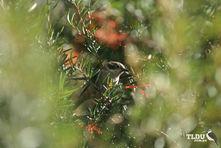
Shoppers Feedback:
Jan 17, 2017
Hello Ros,
I have now paid the invoice, but I would like to write to you just to say a big THANK YOU for getting me the Penguin!
The ChatterMate Penguin became a nice memory for me when I was in New Zealand, and I am so greatful to you for arranging so that I could have it! :-)
Thank you so much!!!!!!!!!!!
Regards,
Malin
Hi Ros,
Many thanks for your very kind email. I really appreciate your prompt reply!
I appreciate your advice regarding the decorations and customs. These are a gift for my daughter’s exchange student family so when she returns home on the weekend I will show her and see if she loves them as much as I do!
Thanks so very much again - I am truly grateful for your kind assistance.
Kind Regards
Bernadette
Ros,
Thanks again for the great customer service. It's a refreshing change!
Best regards,
Trevor
Hey Roz,
Thank you for your emails. Just loved my first order. The cute little Aussie bush critters are going to be used for an office Christmas decoration. My colleagues also liked them and talked about making an order to your site. I'll send you a photo when completed.
I'll be ordering more to send to my daughter's host family in America.
Fabulous service from you.
Kind regards,
Michelle
Thankyou. Order arrived today. One very happy grandson with his new beastly binoculars.
Regards,
Irene
- Home
- Wild Wonders
- Shop
- Aromas of Australia
- Australian Made
- Books
- Book Marks
- Christmas Decoration Sale
- Christmas Decorations
- Clocks
- Drink Holders
- Garden & Outdoor
- Gift Wrapping & Cards
- Home & Giftware
- Jewellery
- Keyrings
- New Products
- Pencils & Pen Holders
- Photo Frames
- Plush Toys
- Plush with Sound
- Sheepskin Rugs
- Stationery
- Stone Carvings
- Toys & Games
- Travel Goods
- Wedding
- Wild Figurines
- Wildlife Safety Products
- Wind Chimes
- Wine Charms
- View All Products
- Wildlife
- Australiana
- Explore
- Contact Us
Brown Headed Honeyeater

Quick Facts
| Length: | 14 cm |
| Height: | - |
| Weight: | 13 grams |
| Colour: | Plain olive green above with a brown head marked by a pale line across the back. Creamy yellow to or |
| Habitat: | Open eucalypt forests and woodlands from the coast to subalpine areas |
| Food: | Insects but will also east nectar |
| Predators: | - |
| Status: | Not Present in NT and SA but is Secure in all other states and territories of Australia |
The Brown-headed Honeyeater is a small honeyeater with a short slender bill. It is plain olive green above, with a brown head marked by a pale line across the back, and is pale grey to buff below. It has a creamy yellow to orange eye-ring which completely encircles the dark eye. In young birds, the eye-ring is blue. This species is usually seen in flocks of five to fifteen birds foraging high in the tree canopy. It has an acrobatic flight and is always on the move.
The Brown-headed Honeyeater is found in coastal south-eastern Australia, from Queensland, mainly west of the Great Dividing Range, to New South Wales, Victoria and eastern South Australia, including the Flinders Ranges and the Murray-Darling Basin. It is also found in parts of south-western Australia, being widespread south of Point Culver through Menzies and Mt Singleton to Coburn and Peron Peninsula, but is rare in the far south-west or on the Swan Coastal Plain.
The Brown-headed Honeyeater prefers open eucalypt forests and woodlands in all but the most arid zones and from the coast to subalpine areas. It is sometimes seen in parks and gardens.
Some local movements within large home-ranges in response to food availability.
The Brown-headed Honeyeater feeds mainly on insects, but will also eat nectar. It usually forages in small flocks of six to twelve birds, mainly in the canopy, but also in lower shrubs, gleaning its food from bark, branches, leaves and flowers.
The Brown-headed Honeyeater will breed co-operatively if helpers are available, with up to five birds attending the one nest. These groups will normally contain a breeding pair plus adults or juveniles, all of which incubate the eggs and help to feed the young. The nest is a small deep cup made from fine bark, grass and hair bound with spiderwebs and slung by the rim in thick foliage 1 m to 6 m above the ground. Hairs are often gathered from live animals such as horses, cattle, humans, kangaroos and Koalas. Will also steal nesting material from other birds' nests. Young birds will probably remain with the family group from year to year.
The Brown-headed Honeyeater prefers the lightest-coloured hairs for its nest, choosing white rather than brown hairs from piebald (two-tone) ponies and cattle, and ignoring all-brown animals.
The Brown-headed Honeyeater is adversely affected by extensive land-clearing, such as in the wheatbelt of Western Australia.
Last Updated: Wednesday 17th July, 2013
BUSH e-TELEGRAPH
Signup for our monthly newsletter the "e-Telegraph"
Quick Links
Home | The Beginning | About The Land Down Under | Wild Wonders | Advertise on Wild Wonders | Christmas Decoration Sale | Christmas Tree Decorations | Drink Holders | Plush with Sound | Stone Carvings | Wildlife Wine Charms | Freebies | Australian Wildlife | Help Our Wildlife | Australiana | Photo of the Month | Explore The Land Down Under | Contact Us | Legal Notices

